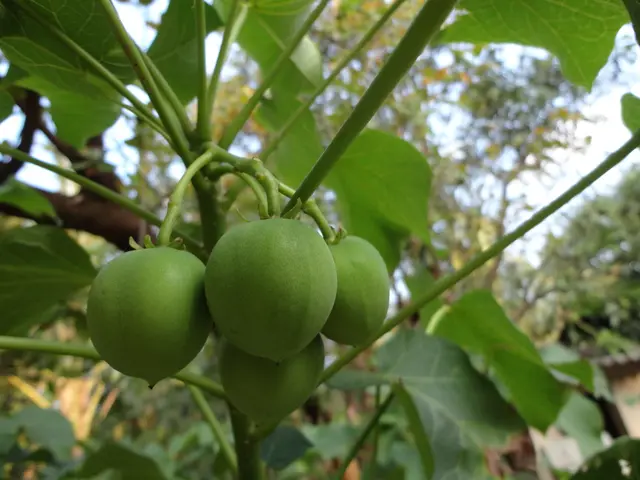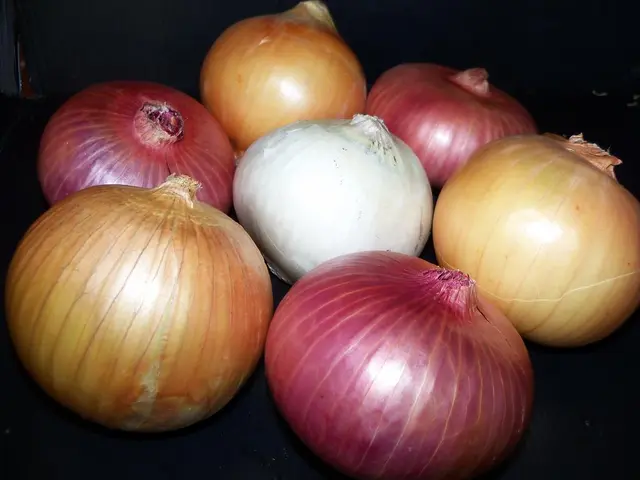Understanding a Plant's Growth Pattern to Forecast Its Light Needs
Learn to Speak Plant: Unlock Your Green Thumb
Knowing what your plants need isn't always easy, but it's simpler than you think if you learn their language. Instead of guessing their light requirements, learn to read their subtle hints. Here's a straightforward guide to identify the clues and make simple adjustments.
Pay Heed to Daily Observations
Take a keen look at your plant daily. Is it standing tall or leaning toward a light source? Are the leaves a vibrant hue and evenly spaced? These simple signs can provide valuable insights. A plant's behavior tells you a lot about what kind of light it prefers or if it's struggling in its current environment.
Notice the Leaning Act
When a plant's stems lean, it's asking for more light. Plants naturally follow the strongest light source and grow toward windows or lamps - a response known as phototropism. So, don't ignore the strong urge to move it to a brighter location.
Check for Leggy Ladies
When a plant stretches for more light, its stems become long, thin, and devoid of leaves. If leaves are far apart, that's a clue it needs more brightness. You may also notice weak or floppy stems. Try shifting the plant to a sunnier locale and see if its growth becomes fuller and healthier.
Look for Compact Lasses
Plants that grow densely and full are content with their light. Their leaves cluster close together, and the plant has a balanced, tidy shape. This healthy growth shows that the lighting is just right. If your plant looks bushy and robust, there's usually no need to change its spot.
Watch for Stalled Development
When a plant stops growing new leaves or shoots, it may be responding to insufficient light. If growth that once seemed steady slows down or stops, the plant might need a better lit location for continued healthy development.
Inspect New Growth
Monitor your plant as it grows new leaves or shoots. If they seem smaller than usual or take a long time to appear, it might indicate that the plant needs more light. New growth should be steady and strong. When a plant doesn't get enough light, it struggles to grow new leaves properly or efficiently.
Look for Odd Shapes
If stems or leaves begin to twist or curl, it might be due to light problems. Uneven lighting can confuse the plant, leading to unusual growth patterns. Observe these irregularities to understand if your light source is strong enough and reaches all sides.
Consider the Growing Direction
Take stock of the direction your plant grows. One side may lean longer or fuller than the other. Plants growing straight and evenly on all sides are usually in the right spot. If you notice uneven growth, rotate the plant weekly to ensure all sides receive equal exposure to light.
Consider Flower Production
If your flowering plant isn't producing flowers, check the light. Many flowering plants need bright, indirect sun to blossom. Inadequate light might be preventing your plant from blooming. Experiment with moving it to a brighter area and observe the changes.
Adapt with the Seasons
Light changes throughout the year. A sunny window in summer may not be as bright in winter. Your plant's needs can shift too. Watch how it reacts during different times of the year, and adjust its position accordingly.
Follow the Sun's Dance
Pay attention to how your plant behaves during different times of the day. Some plants may display movement or growth patterns based on the position of the sun. Leaves or flowers might shift or close. These movements indicate how well your plant responds to the available light throughout the day.
Try and Error Method
Sometimes, you need to try different things to find what works best. Move your plant to a brighter or dimmer spot, and observe the changes. After a few weeks, you'll see if your plant prefers its new location. Your green friend already knows what it wants, so learn to listen and watch the subtle signs. With patience and care, you'll find the perfect spot and help your plant flourish and thrive.
Tidbits
- Plants grow toward the strongest light source naturally due to a response called phototropism.
- Underinsulated light can cause leggy growth, weak stems, and slow growth.
- Even light distribution is essential for healthy growth, while uneven light can lead to deformed patterns.
- Some plants require a specific photoperiod (duration of daylight) to flower correctly.
- Adjust intensity, spectrum, duration, and distribution of light to optimize plant health and development.
- If you find a plant leaning towards a light source or exhibiting long, thin stems with minimal leaves, it might be signaling that it requires more light, indicating a need for a brighter location.
- Conversely, if a plant grows densely and full with leaves closely packed together, it suggests that the plant is content with its current light situation, indicating no need for relocation.








